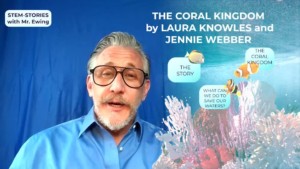Differentiated Instruction
Differentiated instruction: great idea, hard to practice–at least the way most schools and classrooms are organized. Lisa Nielsen offers an alternative:
I often speak and write about differentiating instruction. Unfortunately, when I go into schools I see very little differentiation occurring. This is the case even schools who have bought “magic bullet” programs like Renzulli Learning who tout themselves as a “Differentiation Engine.” I have visited about a dozen schools using such programs but without a solid foundation in what differentiation means. Instead, they have all their students working within the learning management system on the same thing!
When I dig a little deeper about why this is happening teachers confide that they can’t possibly create 32 different lessons for each of their students. When I hear this, I realize they’re not getting something very important. The students own the learning. When we give up control and empower the students to learn the way they want with the tools they want, the results are terrific and the students are partners with their teacher in designing learning methods, tools, and environments that are best for them.
Lisa is a fan of Josh Stumpenhorst and highlights his latest blog,”Student-Driven Learning.”
You can read about his initial motivation for a student driven classroom, how to “give it up”, an initial class update, and updates titled “It’s About the Learning”, “Learning Should be Viral”, “One on One is the Best”, “Sub Plans” and “I Am Done!” about his experiences from the classroom as related to his decision to hand over the learning decisions to his students.
She argues a student driven classroom produced passion-drive learning. Here’s the problem: passion-driven learning is great, but it’s usually sloppy. If you want to make sure students (especially previously underserved students) are learning what they need to learn and have a shot a attending college, they you need to back up passion with a plan and a platform.
Next gen platforms that support differentiated learning will include digital content libraries with lots of adaptive content (that automatically adjusts difficulty) and a learner profile that gets smart enough to recommend the best possible learning experiences. Personal learning groups and project teams, created and managed social media like Edmodo, will replace classrooms as the primary building block.
Platforms will need a tagging and translation scheme that will take input from any game, sim, environment or rubric scored project or assignment and make a contribution to a standards-based gradebook. Dashboards will make progress visible to students, teachers, and other stakeholders.
Better platforms and more adaptive content will help differentiate learning for more students. But the biggest barrier to customized learning may be the gravity of tradition and all the associated architecture, policies, contracts, curriculum maps, and budget practices.
Flipping classrooms to student-driven learning takes courageous teaching. Flipping schools to student-driven learning and dramatically improving learning for all students requires a plan and a platform.








0 Comments
Leave a Comment
Your email address will not be published. All fields are required.